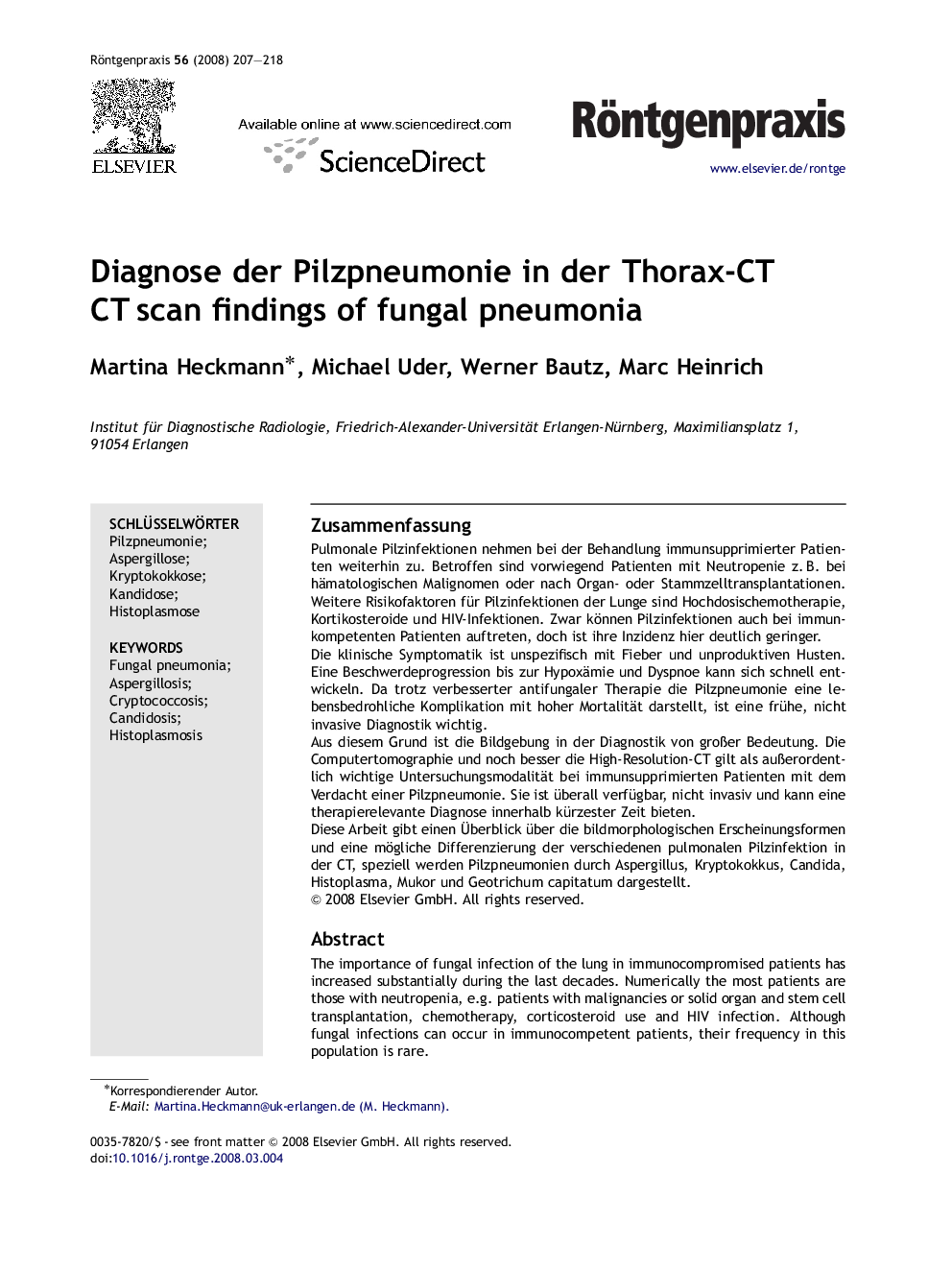| Article ID | Journal | Published Year | Pages | File Type |
|---|---|---|---|---|
| 4250763 | Röntgenpraxis | 2008 | 12 Pages |
ZusammenfassungPulmonale Pilzinfektionen nehmen bei der Behandlung immunsupprimierter Patienten weiterhin zu. Betroffen sind vorwiegend Patienten mit Neutropenie z. B. bei hämatologischen Malignomen oder nach Organ- oder Stammzelltransplantationen. Weitere Risikofaktoren für Pilzinfektionen der Lunge sind Hochdosischemotherapie, Kortikosteroide und HIV-Infektionen. Zwar können Pilzinfektionen auch bei immunkompetenten Patienten auftreten, doch ist ihre Inzidenz hier deutlich geringer.Die klinische Symptomatik ist unspezifisch mit Fieber und unproduktiven Husten. Eine Beschwerdeprogression bis zur Hypoxämie und Dyspnoe kann sich schnell entwickeln. Da trotz verbesserter antifungaler Therapie die Pilzpneumonie eine lebensbedrohliche Komplikation mit hoher Mortalität darstellt, ist eine frühe, nicht invasive Diagnostik wichtig.Aus diesem Grund ist die Bildgebung in der Diagnostik von großer Bedeutung. Die Computertomographie und noch besser die High-Resolution-CT gilt als außerordentlich wichtige Untersuchungsmodalität bei immunsupprimierten Patienten mit dem Verdacht einer Pilzpneumonie. Sie ist überall verfügbar, nicht invasiv und kann eine therapierelevante Diagnose innerhalb kürzester Zeit bieten.Diese Arbeit gibt einen Überblick über die bildmorphologischen Erscheinungsformen und eine mögliche Differenzierung der verschiedenen pulmonalen Pilzinfektion in der CT, speziell werden Pilzpneumonien durch Aspergillus, Kryptokokkus, Candida, Histoplasma, Mukor und Geotrichum capitatum dargestellt.
The importance of fungal infection of the lung in immunocompromised patients has increased substantially during the last decades. Numerically the most patients are those with neutropenia, e.g. patients with malignancies or solid organ and stem cell transplantation, chemotherapy, corticosteroid use and HIV infection. Although fungal infections can occur in immunocompetent patients, their frequency in this population is rare.The clinical symptoms such as fever accompanied with non-productive cough are unspecific. In some patients progression to hypoxemia and dyspnea may occur rapidly. In spite of improved antifungal therapy morbidity and mortality of these infections are still high. Therefore an early and non-invasive diagnosis is very important. That is why CT and even better High-Resolution-CT (HR-CT) is a very important modality in examining immunocompromised patients with a probability of fungal infection. CT is everywhere available and, as a non-invasive method, able to give the relevant diagnose efficiently.This paper should give an overview about the radiologic findings and possible differential diagnosis of diverse pulmonary fungal infections in CT. Pneumonias caused by Aspergillus, Cryptococcus, Candida, Histoplasma, Mucor and Geotrichum capitatum are illustrated.
